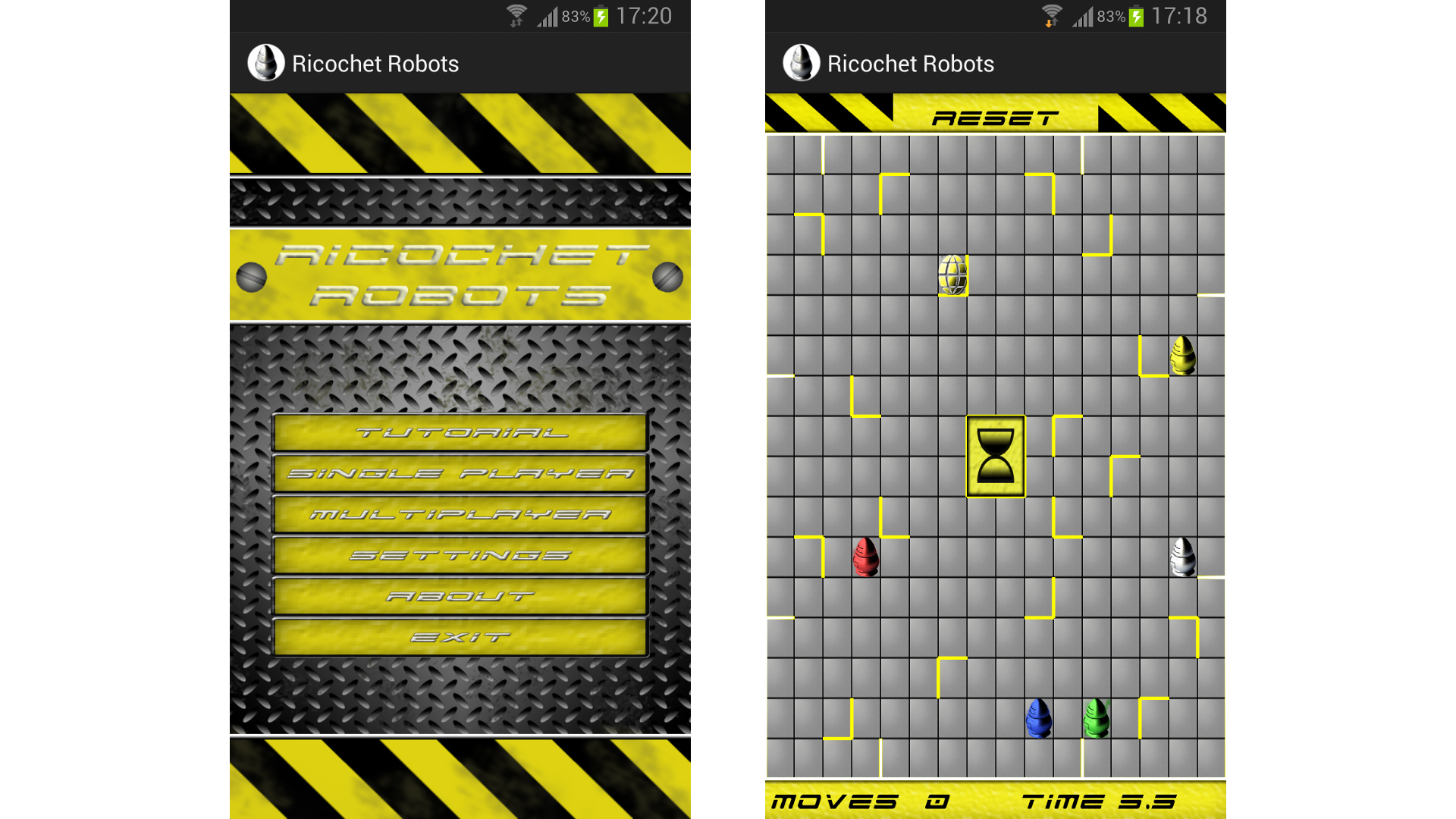Published September 2020
Back in 2012 my then girlfriend offered me the Ricochet Robots board game. I enjoyed it a lot, even though she used to beat me at it. At the time I was just starting out in my professional career and was able to join a trainee program, where I got to do projects unrelated to my engineering background (like negotiate telecom inter-operator tariffs or working from the Silicon Valley hub and scouting for new tech). They were awesome projects and I learned so much doing them. However, them being focussed a bit more on the business side, I lacked a bit of engineering content in my life. So I figured I would learn about Android development and would implement an app version of our beloved game in my free time.
Make robots reach their goal. The tricky part is that once a robot is set in motion it moves until it bumps into a wall or a fellow robot, it cannot stop on its own. Every robot can move in four directions, horizontally and vertically, diagonal movements are not allowed. In order to make your way to the target you need to position fellow robots so that the target seeking robot can bounce off of its helpers. There is a near infinite possibility of movements but the trick is to find a shorter one than your adverse player.
"I really enjoy it! I already knew the board game and think the digital adaptation is great! Congratulations."
"Very nice job on developing the ricochet robot app !"
"I downloaded the app and found it very nice, congratulations!"
Multiplayer
During the play of the game no player actually moves a robot. You find the shortest path in your head and then announce the number of moves you need to reach the target. This means that whoever has a view on the board, he or she can come up with a solution, making the game suitable for basically an unbounded amount of players. Whoever finds a solution announces the number of required moves. Then a 30 second timer is started to give everyone a final chance at a solution and at the end the player with the shortest solution shows the moves.

Left: Main menu screenshot. Right: in-game screenshot
As I had some training in Java the learning was pretty straightforward. I was following a couple of state of the art guides back then [1],[2] to help me familiarize myself with the Android SDK. I remember the most challenging thing to get right was the interpretation of the finger movements. Should you react more to a flick or rather to a drag, when is it just a touch or was it flicked, etc. On a handled device and especially in gesture controlled games it's important to get the interaction right, so it feels natural to be playing it.
This was back in 2012, it was also back on Android version 4, Ice Cream Sandwich. Menu dialogues were black and white, memory on your phone was something like 512MB (I was an enthusiastic user of the HTC Desire back then) and consequently animations and graphics in apps were simpler. If you play the app today, you will notice that. It would benefit from a graphic overhaul to bring it to 2020ies standard. But more interestingly I'd like to tackle integrating a solver for it, which is a pretty complex problem mathematically. If I found the time to work on it a bit again...
[1] Reto Meier - Professional Android Application Development, Wrox
[2] Ed Burnette - Hello Android, Introducing Google's mobile development platform, The pragmatic programmers, third edition.